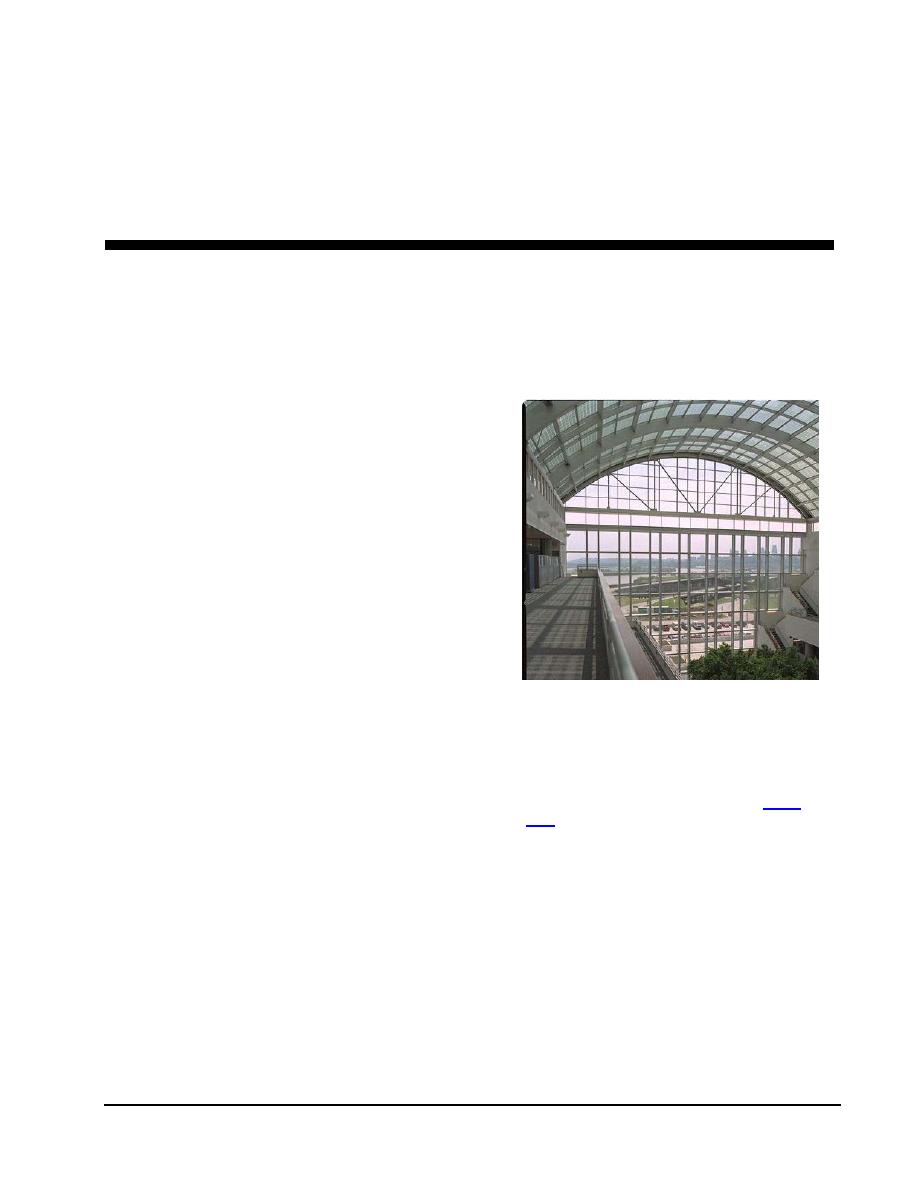
Detailed Evaluations
Step 6:
Evaluate "Moderate-Cost" and "High-Cost" Credit Options
These integrated design solutions can meet
After completing the "Initial Considerations"
multiple goals (programmatic, performance,
steps, project teams will have narrowed down the
aesthetic) in the most cost-effective manner.
remaining LEED credits to a more manageable set
A number of the "High Design Impact"
of "moderate-cost" and "highcost" credit options.
credits in LEED are summarized in step 7 of
Based on the results of the GSA LEED Cost Study,
the Guide.
the majority of these higher-cost credits will have
one or more of the following characteristics:
They require additional space, equipment, or
materials (e.g., shower rooms, carbon dioxide
sensors, photovoltaic panels)
They involve material or equipment types that
are more expensive than "standard" products
(e.g., certified wood, vegetated roofing
systems, dimmable ballasts for lighting
fixtures, high-efficiency chillers)
They require additional labor or planning (e.g.,
construction IAQ management, construction
waste management)
They involve sophisticated architectural
and/or mechanical design and execution (e.g.,
quality daylighting design integrated with
Figure 2-10. Atrium at the U.S. EPA Regional
photocell-based dimming of lighting fixtures)
Headquarters, Kansas City, Kansas. The atrium
design allows most of the office space in the building
The moderate- and high-cost credits also tend to
to receive natural light. The atrium's glass has a low-
have another common characteristic--they can
emissivity coating to allow visible light to enter while
provide significant benefits for the building
reflecting large percentages of the infrared spectrum,
thereby controlling heat gain. (Photo: From Off the
occupants and building owner, as well as
community and environmental benefits. Because
both the costs and benefits are potentially high, the
What potential synergies exist between various credits?
pursuit of credits in this category tends to require
Connections among credits should be
more thorough and detailed analysis. Issues to
established to determine how particular design
consider include the following:
strategies can be used to achieve multiple
Can the high-performance goals directly influence the
performance goals, and earn multiple LEED
major architectural, structural, MEP, civil, and
credits. Items that appear costly when applied
landscape design strategies for the building? By
to only one credit may in fact be justifiable
incorporating the green goals into the design
when applied to multiple credits. A number of
parameters, an integrated design solution can
"Synergistic Credits" are identified in step 7 of
be developed that erases or blurs the
the Guide.
distinctions between "green" building
What level of benefit is associated with the credit or
strategies and the overall project design.
group of credits being considered? In some cases,
GSA LEED APPLICATIONS GUIDE
23


 Previous Page
Previous Page
